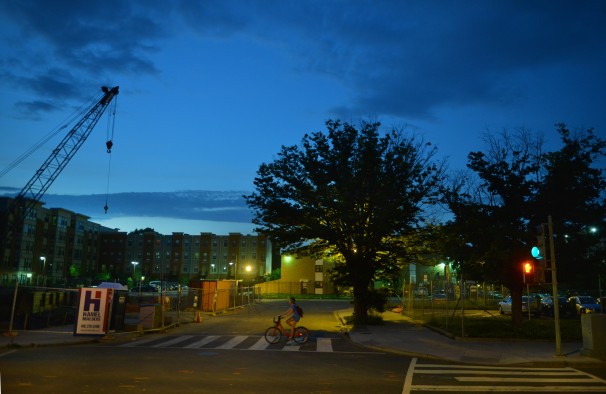Equitable TOD: Actions Speak Louder Than Plans
The mixed-income SeVerna Housing Complex in Washington DC (Photo: Jahi Chikwendiu /The Washington Post)
Recently, the Washington Post ran an excellent story detailing the failure of city leaders to deliver on their promise to low-income residents of the Temple Court apartments. Located 10 blocks from the US Capitol, the neighborhood resembled too many of our American communities with high-crime rates, substandard housing, and few local jobs, grocery stores or safe parks.
An ambitious redevelopment plan, dubbed the "New Communities Initiative," was launched in 2006 that included the vision of creating a mixed-income community. More than 200 low-income families agreed to leave Temple Courts and other buildings so that they could be torn down for new development that promised the dream of a nice, stable home and greater economic opportunity. Years later, as the Post describes, only 22 families have moved back and nothing has yet been rebuilt on the site of the demolished Temple Courts. Gentrification is starting to occur as the surrounding market picks up.
Not only is this a tragic tale of how one city’s most vulnerable population have been left adrift, but it also is a cautionary tale for all of us working to create more equitable and sustainable communities. Having a great, community-led planning process is not enough. Government must be as committed to implementation as to planning; actually more so given both the complexity it involves but also the potential benefits it can yield or the long-term repercussions if it fails.
I have devoted much of my career to the idea of mixed-income communities. Around the time that Temple Courts was being demolished, I was wrapping up a study for the Federal Transit Administration and US Department of Housing – the first of its kind – on strategies to preserve and expand affordable housing near transit stations. Given the change in market demand, urban neighborhoods that could provide good transit access, had walkable and safe streets, and included a mix of housing, retail, dining and office space were suddenly becoming a hot commodity. Rents were skyrocketing, including in my community of Arlington, VA. In response, the idea of “Equitable Transit Oriented Development (TOD)” emerged.
Equitable TOD refers to livable, mixed-use neighborhoods near transit, providing housing for all income levels. Over the years, planners, developers and affordable housing advocates have worked to realize the potential for equitable TOD. Groups such as Living Cities, Enterprise Community Partners and the Low Income Investment Fund, the Center for Transit Oriented Development and the Dukakis Center for Urban and Regional Studies at Northeastern University have written extensively on policies and financing to support equitable TOD. The federal Sustainable Communities Initiative funded planning efforts in dozens of communities to support locally-developed mixed-income plans. This work is invaluable to helping practitioners unlock potential land use tools, regulatory frameworks, and incentives that can support this type of development.
What is so striking about the Post’s story on Temple Court, however, is that despite good intentions and the best laid plans, in the end realizing the potential for Equitable TOD depends upon more simple actions.
- Is there someone in local government with the responsibility and the authority to manage these types of complex projects?
- Is there the political commitment to do what is needed to overcome red tape and put people over regulations?
- Have local planners done their homework to sufficiently identify hurdles to redevelopment before making promises that cannot be kept?
To paraphrase my Mom, for equitable TOD “actions speak louder than plans.” And while this is one story of the failure to deliver on the promise there are many successful stories emerging in cities like Los Angeles, Philadelphia, Chicago, Boston, Denver, and the Bronx. Let’s add to the list, and put a priority on ensuring everyone can realize the promise of a safe, stable home.

